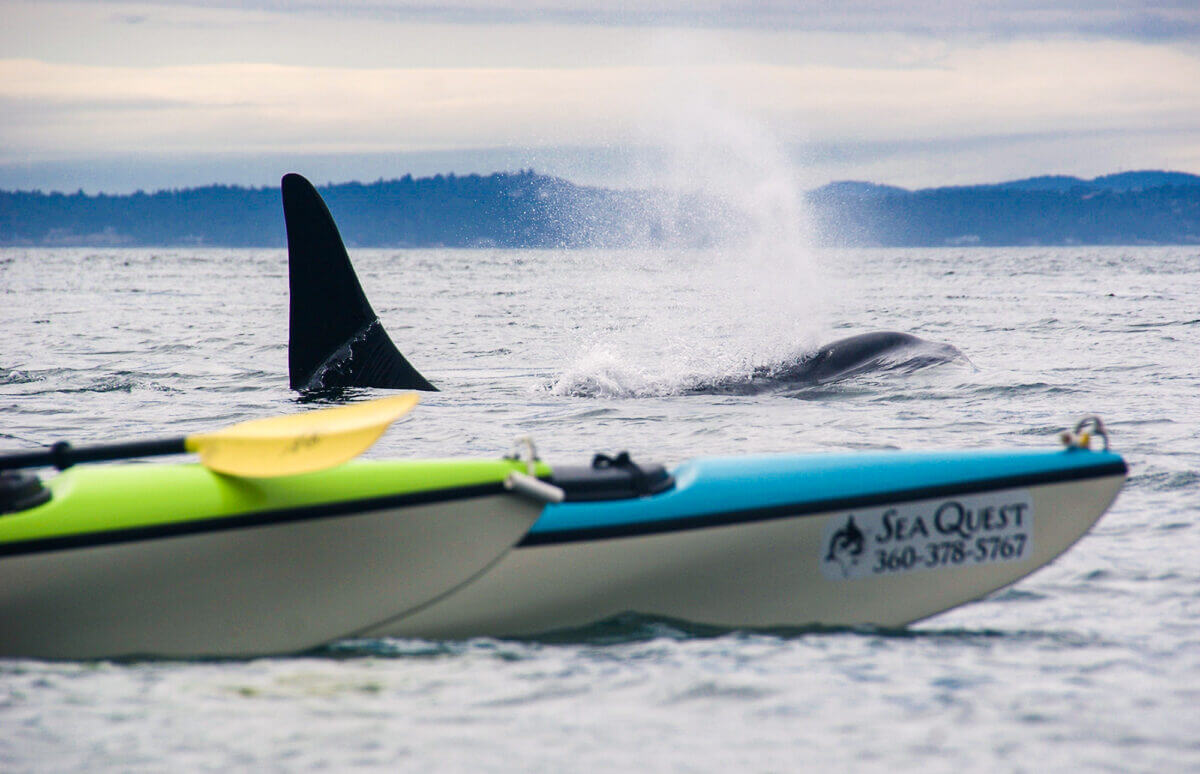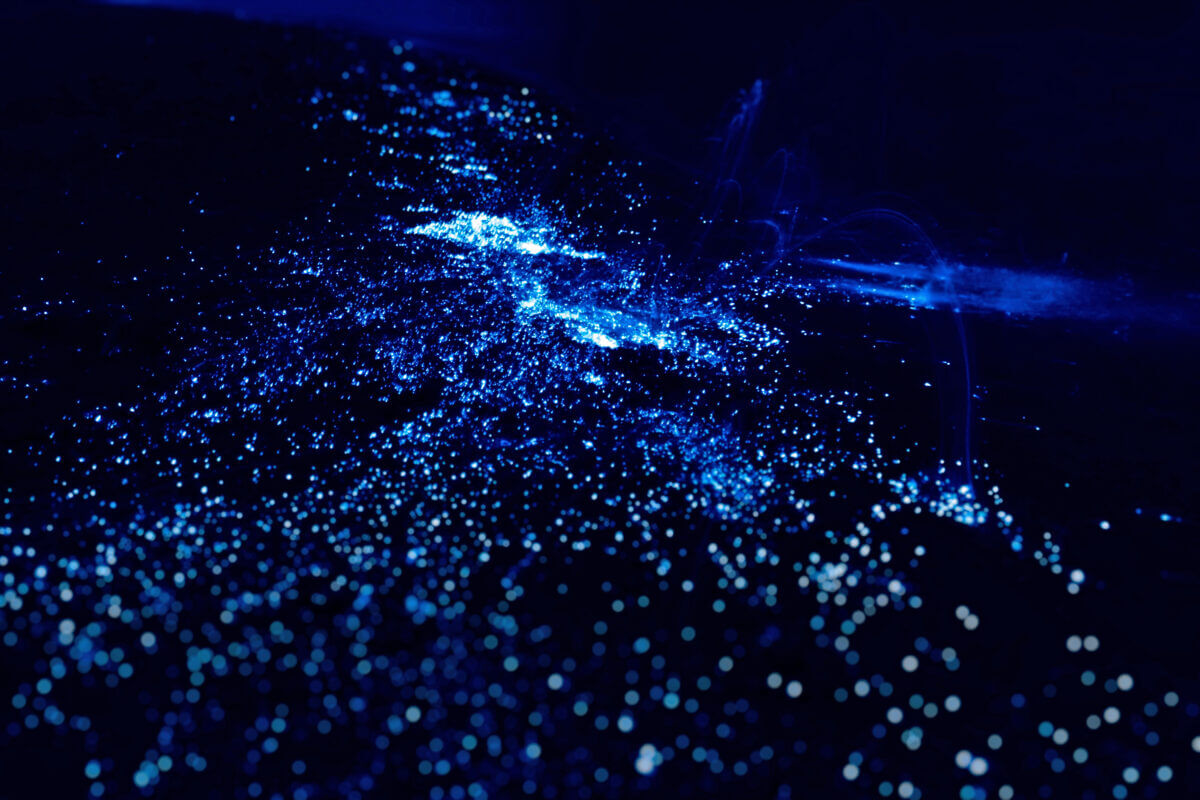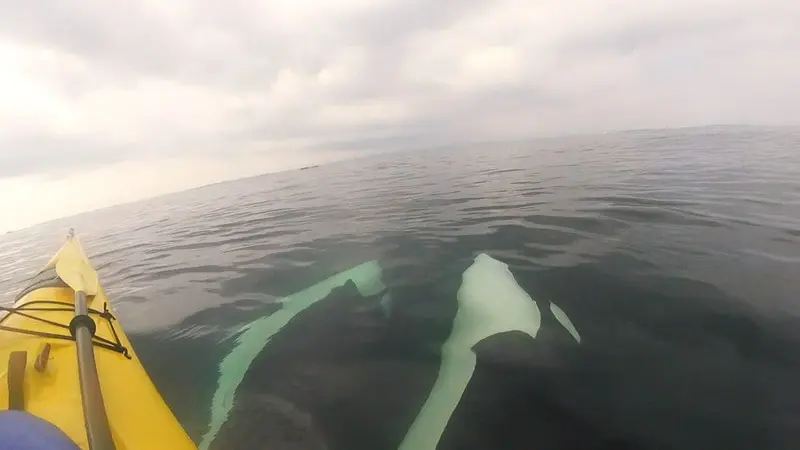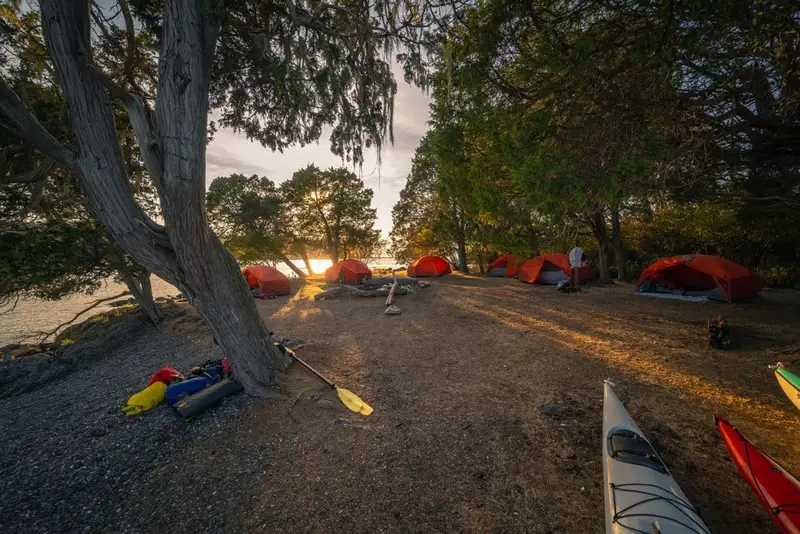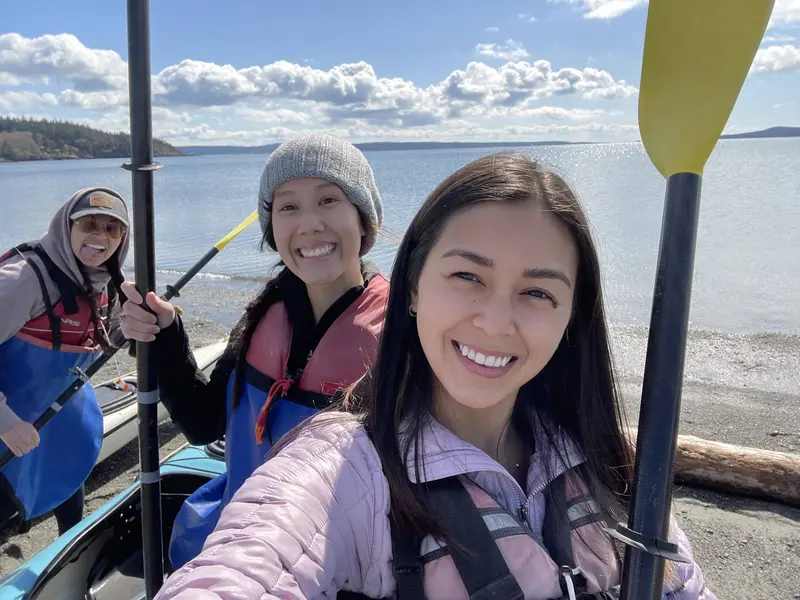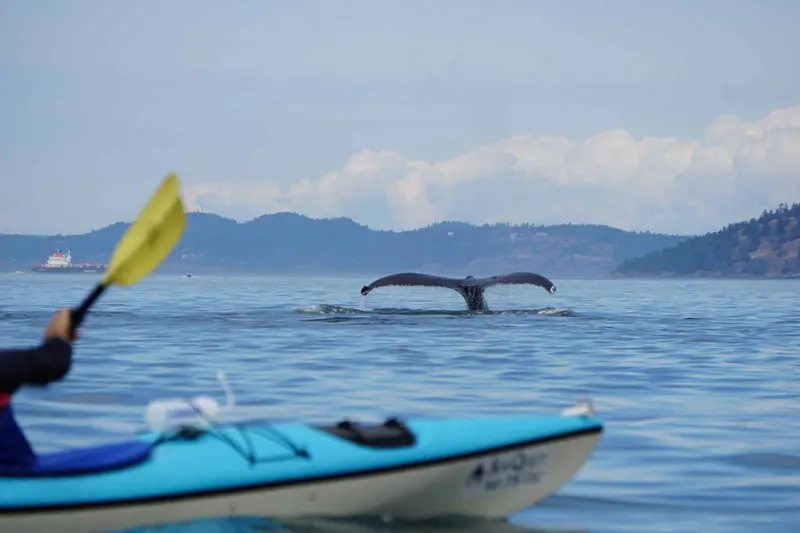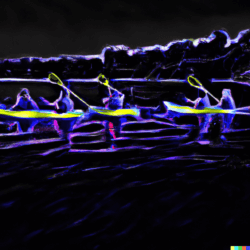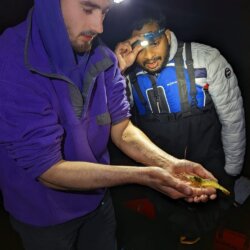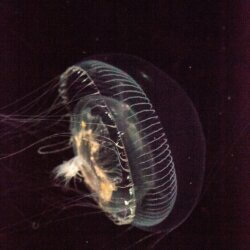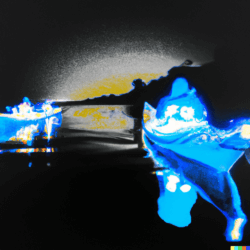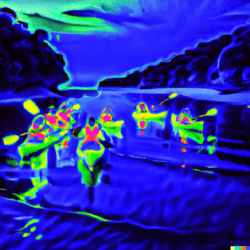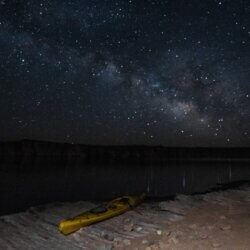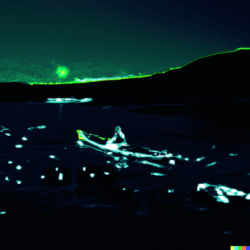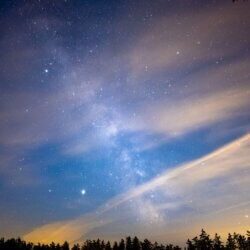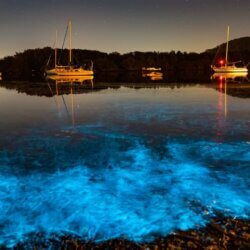
Bioluminescence Kayaking In The San Juan Islands
Sea Quest offers bioluminescence kayaking tours in the San Juan Islands every night. No prior experience is required to join our bioluminescence kayak tours which offer you a chance to enjoy some of the finest light shows that nature provides! Beneath our kayaks, the fertile waters of the San Juan Islands support plankton that produces sparkling lights. And in the sky above, our rain-shadow shields away clouds to create the clearest nights anywhere in western Washington. We are certain that kayaking in bioluminescence is an experience you’ll never forget!
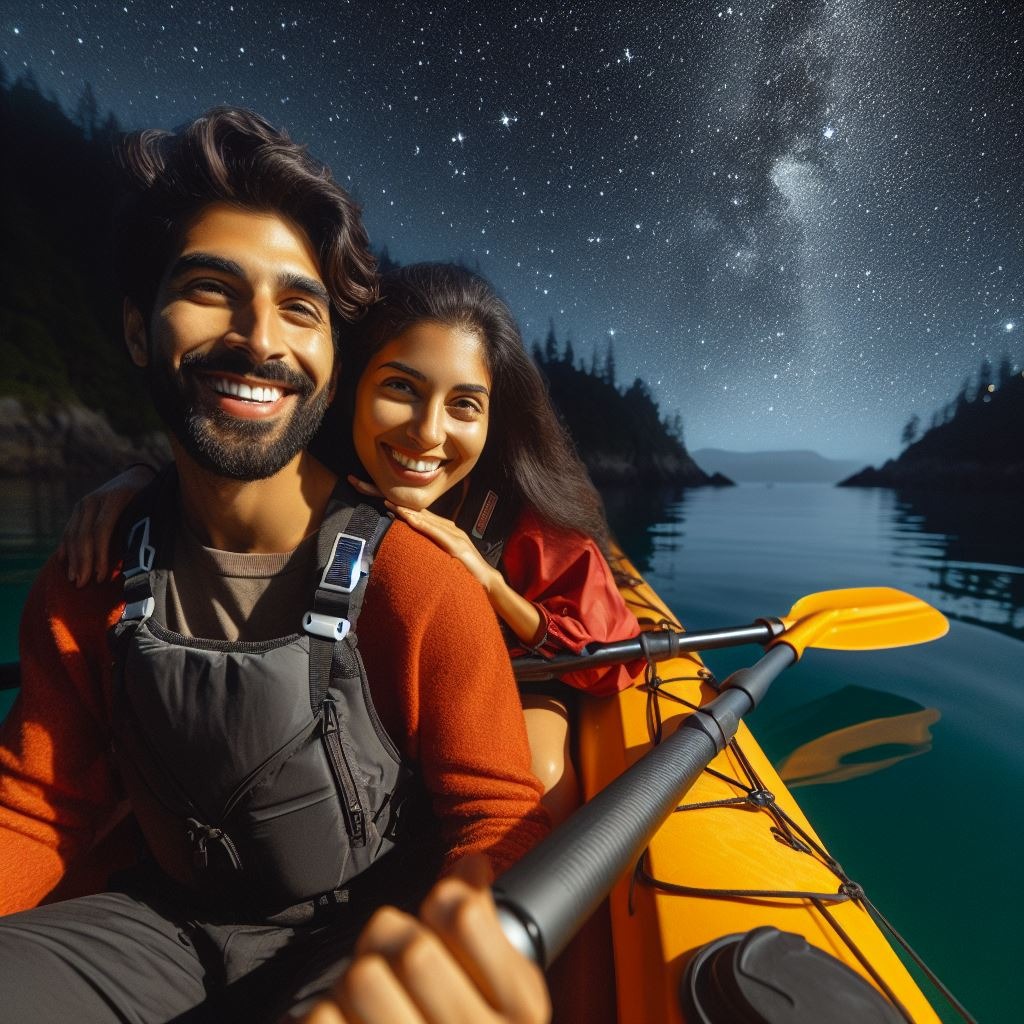
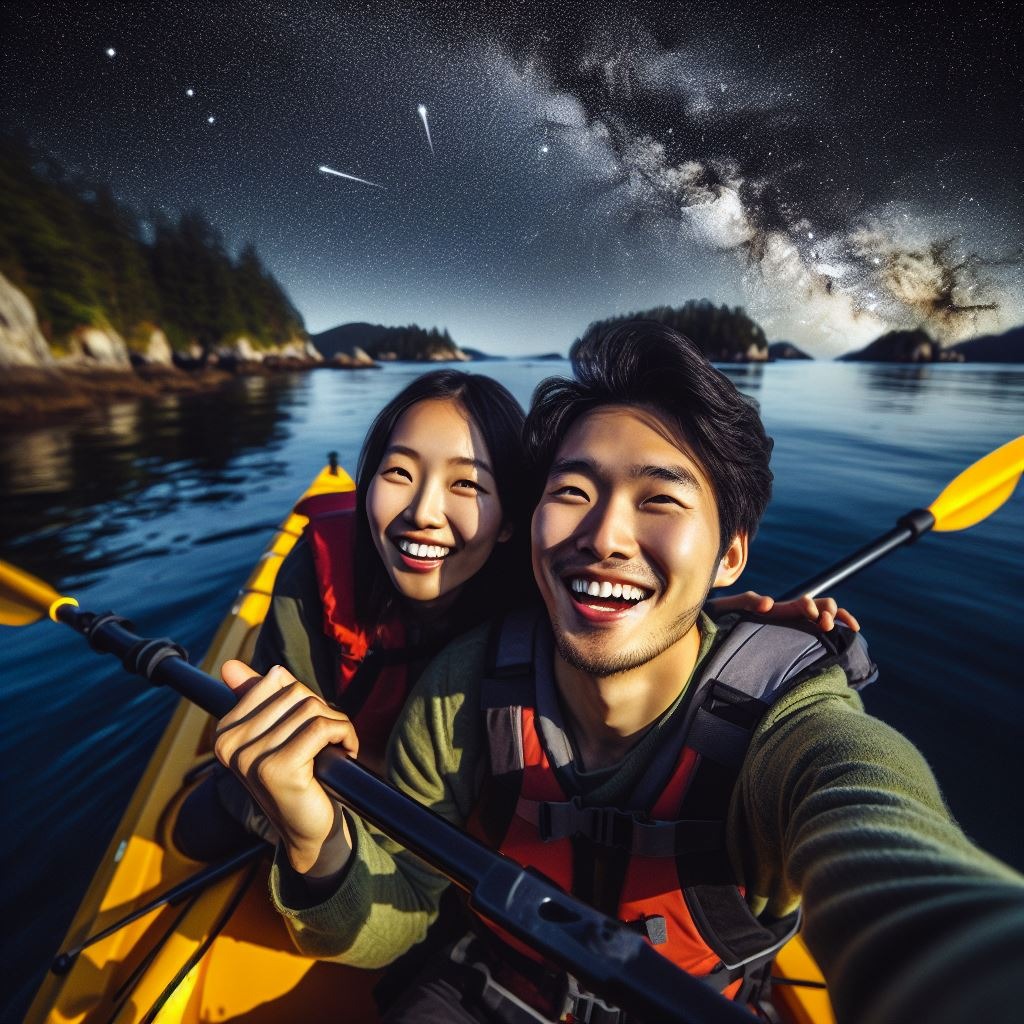
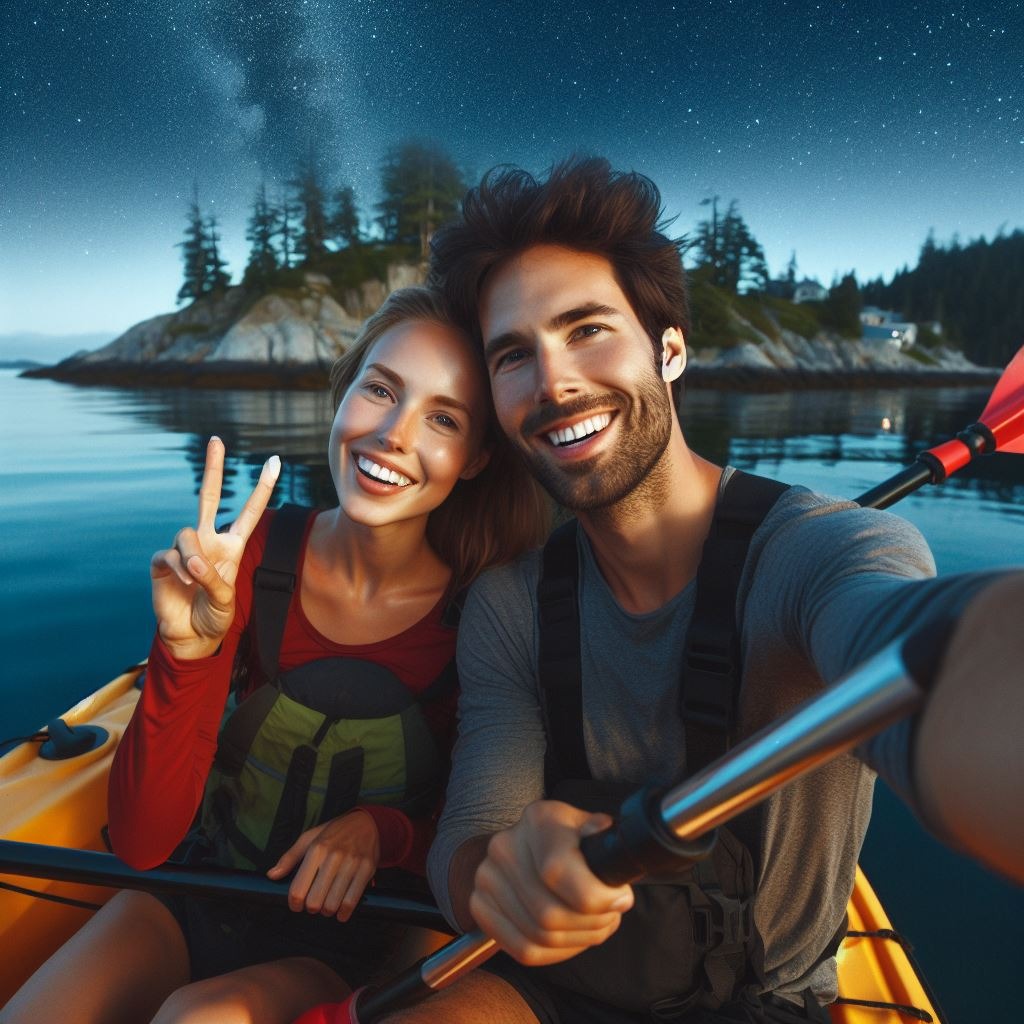
Experience the magic of our Bioluminescence Tours — pure satisfaction awaits! Is
Explore the enchanting world of Bioluminescence with Natura LLC. Dive into a fair and dazzling adventure, confidently backed by clear conditions. Join us for an unforgettable experience!
Bioluminescence Kayaking Tours with Sea Quest - Where Nature's Light Show Begins!
Experience the magic of the San Juan Islands with Sea Quest’s nightly Bioluminescence Kayaking Tours. No prior experience necessary to join our awe-inspiring excursions, where nature showcases its finest light shows! Glide atop waters teeming with radiant plankton, casting a mesmerizing glow beneath your kayak. Above, the clear night sky, free from clouds thanks to our unique rain-shadow, sets the stage for an unforgettable adventure. Dive into the shimmering depths and discover why kayaking in bioluminescence is an experience that will stay with you forever.

Why Choose Us
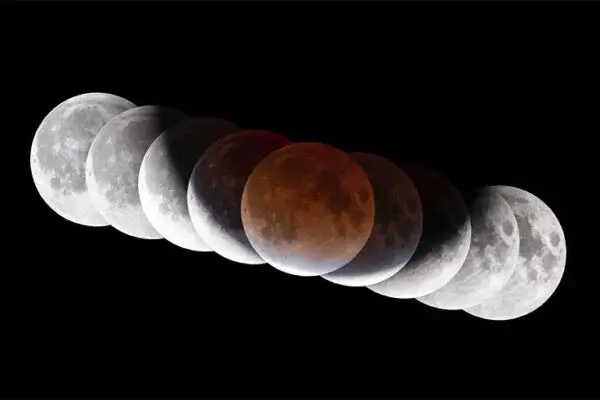
Bioluminescence Night Kayaking Tours In The San Juan Islands
Embark on an adventure with confidence! Sea Quest guarantees the quality of our Bioluminescence Kayaking Tours in the San Juan Islands. If for any reason you’re not completely satisfied with your experience, we offer a 100% Money Back Guarantee. Join us after dusk to explore the coastal waters and witness the mesmerizing bioluminescent organisms. Book now and experience the magic risk-free!
Choosing the Ideal Dates for Your Bioluminescence Kayak Tour on San Juan Island
June, July and August are best due to plentiful sunlight and warmer surface waters. But there is still the potential of seeing displays in late spring and early fall.
What Lunar Phases Are Best For Star-gazing & Bioluminescence?
- March 2-15
- April 2-15
- May 1-15, May 30
- June 1-14, June 28-30
- July 1-13, Jul 28-31
- August 1-12, August 26-31
- September 1-10, September 24-30
- October 1-9, October 25-31
What Lunar Phases Best Are For Romantic Moonlight Kayak Tours?
- March 16-31
- April 1, April 16-30
- May 16-29
- June 15-27
- July 14-27
- August 13-25
- September 11-23
- October 10-24
Join A Kayak Quest For Whales
Book your kayak tour in the San Juan Islands!
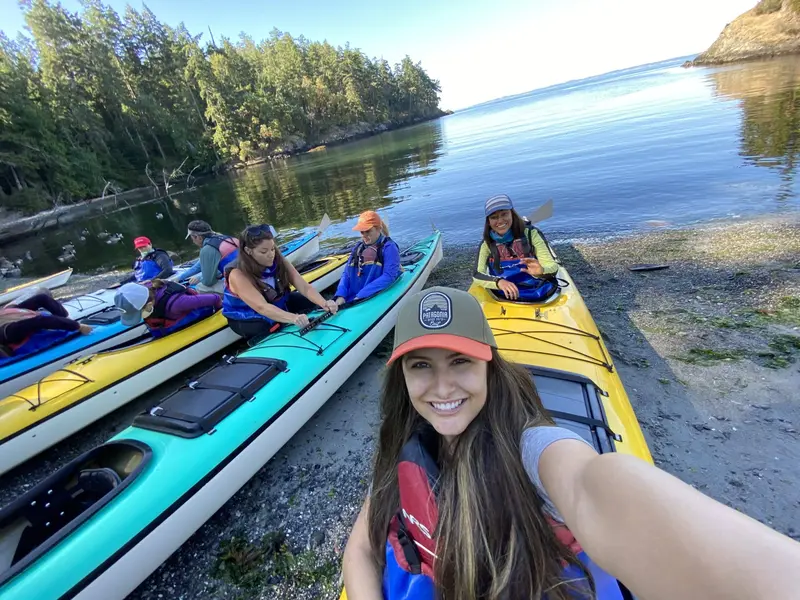
Women's Only Kayak Camping Tours
2 - 5 days
All Ages
$549
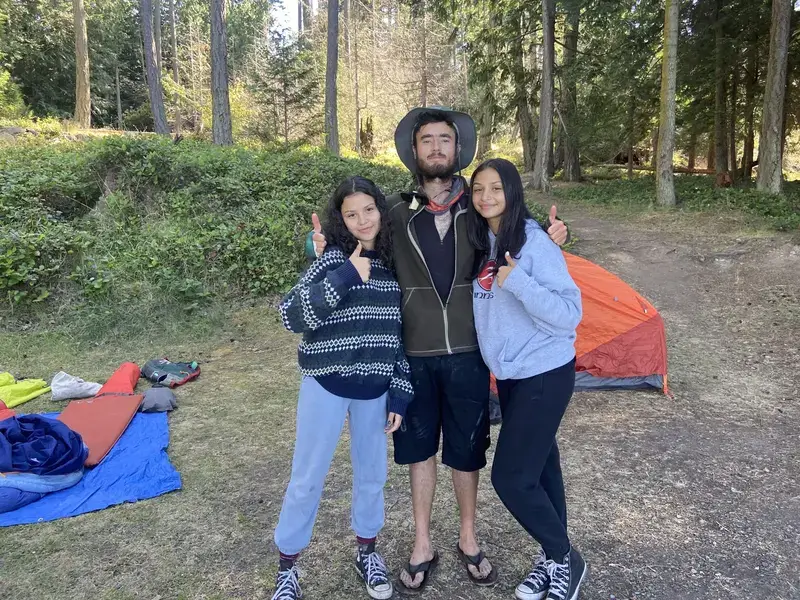
Private Kayaking Trips
1 - 5 days
All Ages
$99
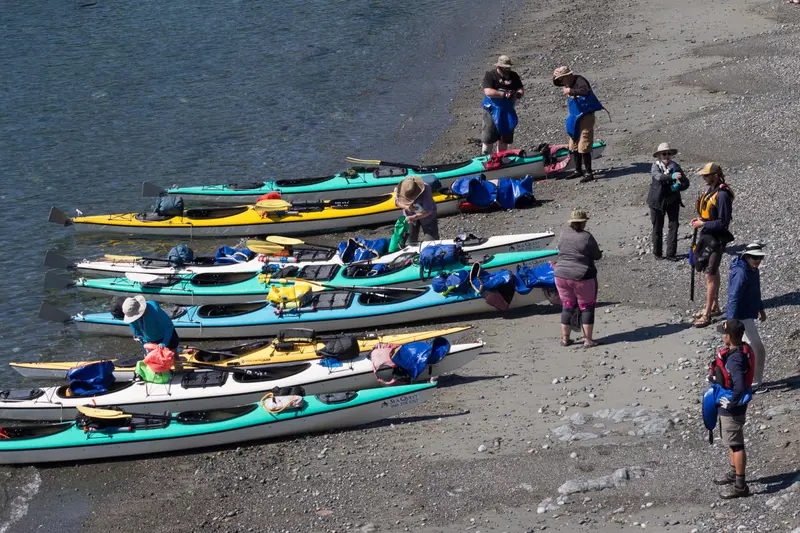
Custom Kayak Tours
1 - 5 days
All Ages
$99
Trip Details For The Bioluminescence Kayak Tour From San Juan Island
- Meeting Place: Friday Harbor, San Juan Island
- Meeting Time: Typically begins at sunset (exact times vary with seasonal daylight hours)
- Itinerary: Shuttle van to launch beach, one-hour kayak lesson, 1.5-hour kayak exploration, floating in rich bioluminescence spots, and enjoying the spectacle
- Finish Time & Place: Friday Harbor Ferry Terminal, approximately 3 hours after meeting guides
- Total Time: Around 3 hours from meeting guides to finish (weather-dependent)
We Provide The Following
Sea kayaks, all related sea kayaking trip gear, safety equipment, transportation to and from Friday Harbor and the launch beach, instruction and expert guides.
What You Need To Bring
Suitable clothing and footwear for the beach, water bottle, HEADLAMP. Bring a warm sweater and rain jacket if windy or rainy.
Please Note:
Bioluminescence cannot be guaranteed. It can be suppressed by heavy winds or clouds that day. Views of the moon and stars may be obstructed by clouds, although these are rare July-September.
Our tours end well after dark. Make sure you book accommodations ahead of time for after your tour. The ferry system usually doesn’t run late enough to leave the island after your tour.
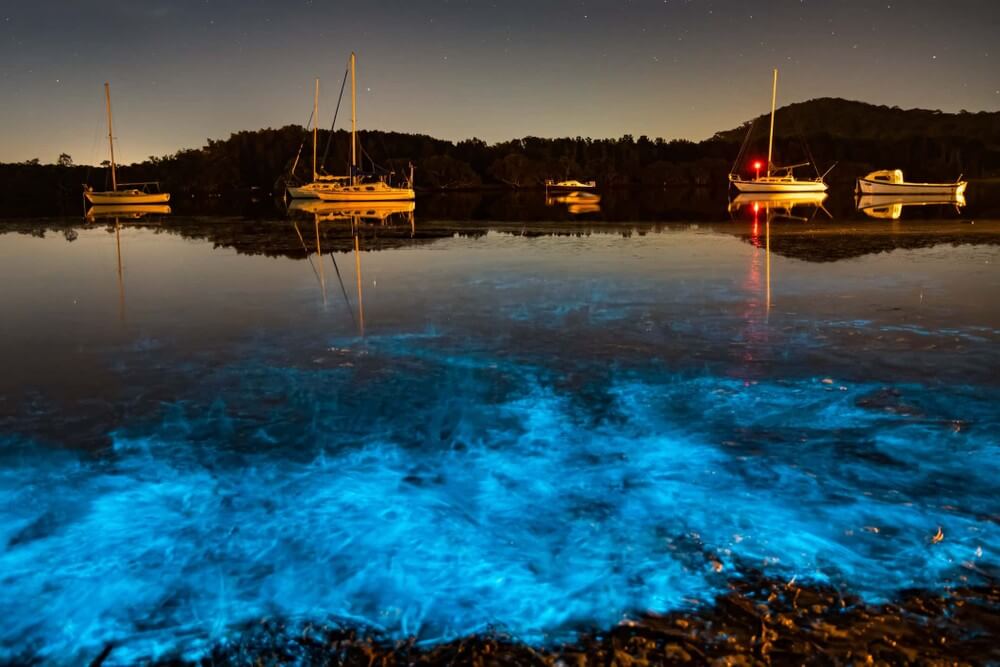
What Is Bioluminescence?
Bioluminescence is a biological light display that produces no heat. It is created by special protein, and enzyme combinations found that evolved in organisms ranging from fungi to fish. Some objects emit light in a single color, while others can produce a rainbow of colors.
In the sea, most bioluminescence is produced by plankton – organisms that drift on the currents. These include pulsating “jellyfish,” clusters of salps, and even masses of mating marine worms! utmost dinoflagellates are bitsy organisms that use the sun for energy during the day. At night, they produce sparkles of light when disturbed by the movements of fish, seals, kayaks, and swells.
Why Does Bioluminescence
Exist?
One theory for why bioluminescence occurs is called “The Enemy of my Enemy is My Friend hypothesis.” When a bloodsucker moves in, these organisms release light, which has the implicit to illuminate a different target for the bloodsucker to eat rather. Or the predator itself could be illuminated and be eaten by a larger one! Jellies may use their light to attract prey light moths to a candle. Others, such as nerius worms, use their glow to attract mates – very sexy!
Is Bioluminescence The Same Thing As Phosphorescence?
Bioluminescence is a strictly biological phenomenon. Phosphorescence also produces no heat but differs by releasing light absorbed by a chemical process. The reason you may hear some people use the wrong term is that soldiers in World War II saw light in the sea of the same color as their phosphor tracer bullets. Not knowing any biology, they mistakenly called it “phosphorescence,” and the improper name stuck for decades afterward.
Embark on a Worry-Free Adventure: Tour with Confidence and Peace of Mind!
Set off on a journey of discovery without a single worry. Our tours are crafted to offer you both tranquility and excitement, ensuring every moment is enjoyable. With us, your adventure is all about immersion in breathtaking experiences, backed by our commitment to your satisfaction. Dive into adventure with peace of mind!
Testimonials


Gallery
Our Achievements
National Geographic chooses our San Juan Islands Kayaking tours in “10 Best Trips in the World for 2011.”

Sea Quest Kayak Tours is on ABC News! See us Kayaking with Orca Whales in the San Juan Islands.

San Juan Islands Kayaking Trips in Killer Whale Waters of Washington – a World’s Top 10 Adventure Bargain!

San Juan Island Kayaking Trips in Orca Whale Waters in Washington State – Selected as a Top 20 American Adventure!
Frequently Asked Questions
Yes! Even though we are paddling in the dark, kayaking at night with Sea Quest Kayak Tours is still incredibly safe. We make sure everyone brings or is provided with headlamps so we can stay in visual communication at all time. Furthermore, our guides are able to navigate because they are familiar with the shorelines of the area and stay within a protected bay. Even in very dimly lit conditions they will ensure you stay with the group and enjoy the bioluminescence.
Our kayak tours are always different with a diversity of visual display seen on our tours. Sometimes the bioluminescence is so thick it appears like a magic glowing carpet on the surface of the water. At other times through the year bioluminescence simply sparkles fantastically in lower densities.
In addition to bioluminescence we will sometimes see the following creatures glowing in the water:
- dock shrimp
- jelly fish
- ctenophores
- porpoise
- seals
- and even orca whales!
Bioluminescence is a biological light display that produces no heat. It is created by special protein and enzyme combinations found that evolved in organisms ranging from fungi to fish. Some glow continuously while others can carefully control their light in unique displays.
In the sea, most bioluminescence is produced by plankton – organisms that drift on the currents. These include pulsating “jellyfish”, clusters of salps, and even masses of mating marine worms!
The largest majority, though, are microscopic creatures that use sunlight for energy during the day.
By night they release sparkles of light when disturbed by the movements of fish, seals, kayaks and waves.
Bioluminescence and the lunar cycle have a strong relationship. A bright full moon will make the glowing organisms seem dimmer. Oppositely, a dark new moon will allow the full glory of bioluminescent organisms to shine! The “in-between” phases of the lunar cycle offer moderate displays. To increase your chances of seeing a good bioluminescence display on your kayak trip with Sea Quest, use the lunar calendar below and select a date with a darker moon. If you must pick a date with a partial moon, go when the moon is in the “third-quarter” of the cycle. The moon is waning (becoming smaller) and rising later at night at this time. The “first-quarter” moon is waxing (expanding) and rises well before the sun sets.
Bioluminescence is a strictly biological phenomenon. Phosphorescence also produces no heat, but differs by releasing light that was absorbed by a chemical process. The reason you may hear some people use the wrong term is because soldiers in World War II saw light in the sea of the same color as their phosphor tracer bullets. Not knowing any biology, they mistakenly called it “phosphorescence” and the improper name stuck for decades afterwards.
Because of the abundant sunlight and warmer surface waters, the months of June, July, and August are ideal. However, there is still a chance of discovering displays in late spring and early fall.
Best dates for star-gazing and bioluminescence:
- March 15-27
- April 13-26
- May 12-25
- June 10-24
- July 10-23
- August 8-22
- September 6-21
- October 6-20
Best dates for romantic moonlight kayak tours:
- March 4-10
- April 3-9
- May 2-8
- June 1-7 + 30
- July 1-6 + 29-31
- August 1-4 + 28-31
- September 1-3 + 26-30
- October 1-2 + 25-31
©2024 Sea Quest Kayak Tours / Natura LLC, All Rights Reserved.
